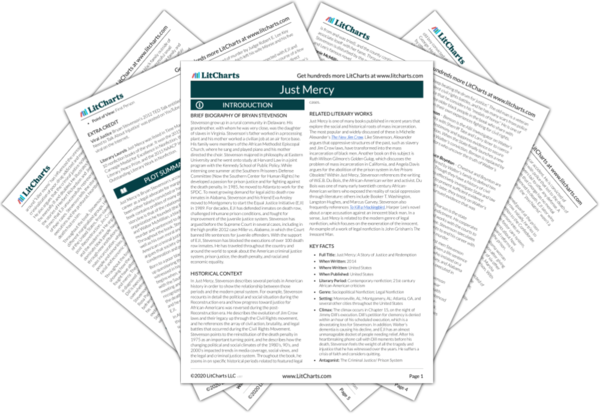AI ToolsNew
Tools to make learning and teaching easier
Just Mercy Study Guide |
Next
Summary
|
Welcome to the LitCharts study guide on Bryan Stevenson's Just Mercy. Created by the original team behind SparkNotes, LitCharts are the world's best literature guides.

Viral Justice Bryan Stevenson’s 2012 TED Talk entitled “We Need to Talk About Injustice” was posted on YouTube and went viral on the Internet.
Literary Laurels Just Mercy was listed in Time Magazine’s top 10 nonfiction books of the year. It won the 2015 Andrew Carnegie Medal for Excellence in Nonfiction, the 2015 Dayton Literary Peace Prize, and the 2015 NAACP Image Award for Outstanding Literary Work in Nonfiction.